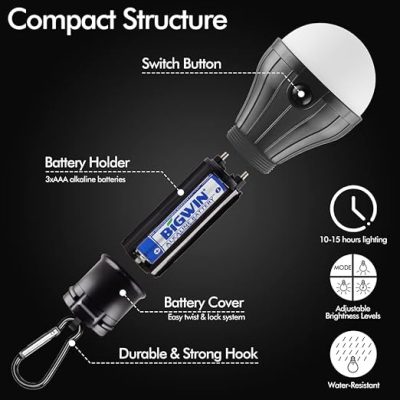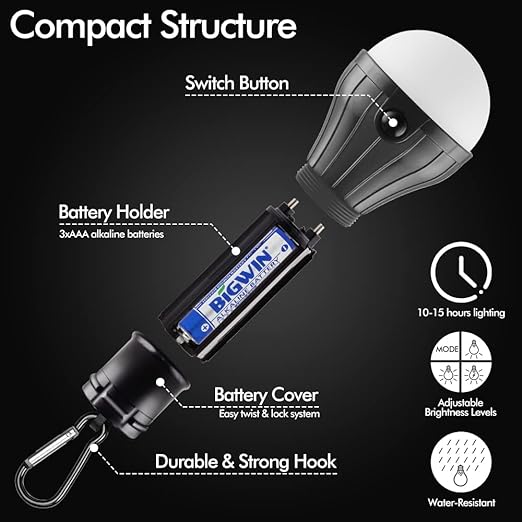
LED Lights are not just for Christmas – Affordable, Compact, and Bright!

Illuminate Your Off-Grid Adventures with a Tent Lamp Portable LED Light!
Compact, bright, long-lasting and economically affordable at just $13.99 in the US, these lights are tailored to brighten your outdoor experiences.
Unlike their Xmas counterparts, these LED lights rank high in portability due to their lightweight and compact design for backpackers and minimalists, can be effortlessly stowed in your gear, and emit a stunning 150 lumens – sufficient to illuminate your entire campsite. Stumbling in the dark would be a thing of the past.
Click Here to get your very own Tent Lamp Portable LED Tent Light 4 Packs Hook Hurricane Emergency Lights Camping Lantern Bulb Camping Equipment for Hiking Backpacking Fishing Outage today and embark on a journey towards a more organized and clutter-free life.
These lights come equipped with hooks, offering versatile hanging options -m inside your tent for a cozy ambiance, attached to your backpack for hands-free hiking lighting or simply hook them to a nearby tree branch at your campsite. The choice is yours!
Being off-grid can be unpredictable and the last thing you’ll need is a gadget failing you midway through. Our LED lights are powered by three AAA batteries and promise long-lasting battery life offering hours of continuous illumination, so you don’t have to worry about running out of light.
Crafted meticulously, these lanterns are weather-resistant and shockproof. Be it heavy rain, gusty winds or even accidental drops, your Tent Lamp Portable LED Lights ensure continuous, bright and functional lighting in even the toughest outdoor conditions.
In an uncertain world, these portable LED lights double as hurricane emergency lights, acting as a lifeline in case of a power outage or natural disaster.
At an incredibly economical price of $13.99, you receive a pack of four lights. That’s enough to spread across your campsite or keep backups for emergencies.
The Tent Lamp Portable LED Lights bring to you the perfect blend of affordability, function, and durability. Don’t let lack of light limit your expeditions into the wilderness of the off-grid life. Illuminate your path, set up your cozy nooks under the stars and witness the beauty of off-grid living with our LED lights. Brands like LuminAID, BioLite, and Goal Zero stand tall along with these lights, offering you a wide range of options to choose from. Pack these lights, and you’re one step closer to experiencing the freedom that off-grid exploration has to offer. Now light up and live on!
Click Here to get your very own Tent Lamp Portable LED Tent Light 4 Packs Hook Hurricane Emergency Lights Camping Lantern Bulb Camping Equipment for Hiking Backpacking Fishing Outage today and embark on a journey towards a more organized and clutter-free life.…





 Knowing which bets to place when it comes to adopting emerging new technologies is impossible. But its still worth trying. Betting on the winners of the next generation, not as investment but in terms of incorporating them into your life, can give you a head start, future proof your life or work, and for this reason alone is well worth attempting.
Knowing which bets to place when it comes to adopting emerging new technologies is impossible. But its still worth trying. Betting on the winners of the next generation, not as investment but in terms of incorporating them into your life, can give you a head start, future proof your life or work, and for this reason alone is well worth attempting.





